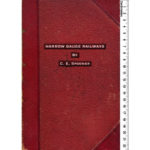Description
Lest be thought that I am being unfair to the man by placing him in this category I would just remind you that in 1862 Fairlie eloped with the under-age daughter of his business associate, George England, committed perjury by swearing an affidavit that she had parental consent, married illegally and fled to Spain until the fuss had died down. When he did return he found himself on trial at the Central Criminal Court. During the cross examination of George England by Fairlie’s defence counsel, it emerged that England had “forgotten” that he had not actually been married to the girl’s mother when the child was born. (Sensation in Court! He therefore had no rights in the matter. Poor Mrs. Fairlie was revealed to be a bastard who could marry any one she chose. The case was dismissed but the matter caused a scandal which took some living down.
Fairlie was an adept self-publicist and this booklet can be seen as part of his “rehabilitation”.
Cleverly presented as an interview between a writer and an engineer, it gives Fairlie a platform to expound his theories on locomotive design, particularly his belief in total adhesion- that is that all the weight of the locomotive must be applied to wheels giving traction. The first Fairlie locomotive embodying this principle would be supplied to the standard gauge Neath & Brecon Railway in 1865 but it would be the “Little Wonder” (not only the LNER named locos after race horses!) built for the 2ft gauge Festiniog Railway in 1869 which would seal his reputation.
His experience with the Festiniog would also convert him into a strong proponent of narrow gauge railways and he would publish a second book “Railways or No Railways” in 1872.
PREVIEW BELOW – MAY TAKE A WHILE TO LOAD.



Reviews
There are no reviews yet.